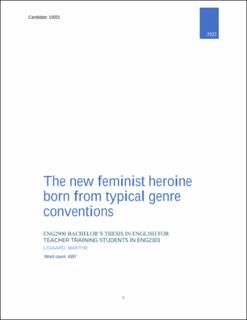| dc.description.abstract | Although women historically have been forced to align themselves with the ideals created by men, Jane Eyre refuses to waiver and give up her morals and agency. She states that she will not live up to this angel-like ideal clearly to Mr. Rochester when the pair is discussing marriage. The ideal woman in the 1800s was supposed to marry and move on from adhering to a father, to a husband. She is obedient, caring, and dependent. Jane Eyre is a “bildungsroman”, making it natural to analyze. The relevant characters will be Mrs. Reed, Helen Burns, Bertha Mason, and Jane Eyre herself. Although these characters might be different from other women in literature at that time, one can discuss that they still adhere to some stereotypes. This paper will argue that the typical constructions of women, the evil stepmother, the martyr and the madwoman, help create the new complex feminist heroine that is Jane Eyre. | |
